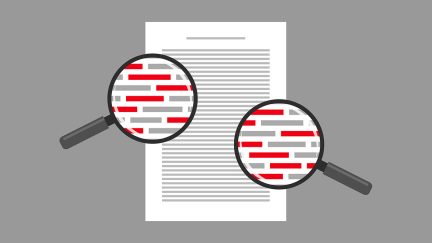Get more! Sign up for PLANSPONSOR newsletters.
The PEP Opportunity
Coming to market January 1 are pooled employer plans (PEPs), which were created by provisions of the Setting Every Community Up for Retirement Enhancement (SECURE) Act, passed late last year.
Several entities have announced that they’re working to create PEPs, and the Department of Labor (DOL) has issued a Notice of Proposed Rulemaking (NPRM) to implement the registration requirements for pooled plan providers (PPPs), as well as a request for information (RFI) on prohibited transactions involving PEPs.
Rich Rausser, senior vice president, client services, at Pentegra, says he’s glad the DOL is taking more action on PEPs; however, he adds, he finds it interesting that people are looking for more guidance when the PEP provisions in the SECURE Act already provide a lot of information. “The DOL states concerns about how PEPs will work, but entities can create one based on the guidance we have to date,” he says.
Rausser notes that, in general, the goal of PEPs is to broaden retirement plan coverage and make it simpler and more cost effective for small employers to sponsor plans. “It is about bringing large plan economies of scale and best practices to small employers.”
Bruce Ashton, partner at Faegre Drinker Biddle & Reath, says he is skeptical about the extent to which the scale of PEPs will reduce costs. “It certainly will on the investment side, and plan investments are the most expensive items in plan,” he says. “Costs may be somewhat more for smaller employers that would not have to have an audit of a single plan. Once in a PEP, the PEP will be audited. The cost may be trivial but, nonetheless, it’s an added cost.”
Ashton adds, “I’ve been talking with recordkeepers and they say recordkeeping for PEPs isn’t going to be any less expensive. It’s like recordkeeping a bunch of individual plans.”
A simple plan design can eliminate some costs. “I can see some offering a simple plan design, a simple definition of compensation, even a safe harbor plan design, although that creates employer contribution expenses,” he continues. “But I can also see PEPs offered at more than one level and price point for basics on up.”
If an employer joins a multiple employer plan (MEP) of any kind, it is not in control of the plan, says Pete Swisher, president of Waypoint Fiduciary LLC. While that’s the point of PEPs for most plan sponsors, some like to maintain control of decisions such as the investment lineup, for example. Swisher says that, in his opinion, PEPs should have a simple plan design so they are easier to administer and have a lower chance for errors, but it’s possible there will be plans that offer customizable benefits.
While cost is a critical factor in offering a retirement plan for a small business, Rausser says the decision is also about time and complexity. “These folks are not retirement plan experts. They want to run their business and want to provide a retirement plan. Even those that are offering a plan are already outsourcing some duties,” he says. “Employers need to question whether the cost of a PEP is reasonable considering if they had to do administration on their own, it would be taking time from their business. And they need to question whether it will help them attract and retain employees.”
Rausser says he thinks there will be different models of PEPs based on who is sponsoring them. “I can see all kinds of models. Some PPPs may assume all duties and include recordkeeping,” he says. “We are looking at being a PPP and most likely are not going to be the recordkeeper.”
“It seems to me there will be three fundamental types of PEPs,” Ashton says. “One completely unbundled and unconflicted. For example, the PPP is a TPA [third-party administrator] with no service provider affiliates and no proprietary investments.” The second type, Ashton says, would be a partially bundled solution where the PPP selects either affiliates as service providers or proprietary products. The third is fully bunded, with the PPP using affiliates and proprietary products.
Who’s Responsible for What?
“There is a movement in the U.S. to more group retirement programs,” Swisher says. “They all do similar things and have fairly similar benefits. Both MEPs and PEPs have the advantage that they take plan sponsors further out of the middle of things. They are a way to outsource chores and duties. You can’t outsource being a plan sponsor unless you join a group program.”
Plan sponsors that join a PEP retain two primary responsibilities, says Ashton. They are responsible for selecting and monitoring the PPP and any other named fiduciary of the plan. He says the SECURE Act says plan sponsors are also responsible for the investments offered in the plan, but the act goes on to say that’s not the case if the PPP delegates investment responsibility to a 3(38) investment manager.
“Probably, in most PEPs, the only retained responsibility will be to select and monitor the PPP,” Ashton says. “But, this means finding a PEP based on the services offered, how much responsibility is assumed by the PPP and service providers and what it costs, and whether the service providers appear to be competent.”
He adds that plan sponsors are not responsible for monitoring recordkeepers. That is the responsibility of the PPP. “The PPP is the responsible fiduciary for administration of the plan and for selecting and monitoring service providers,” he says.
The PPP will remind participating employers of their oversight duties. Rausser says the DOL’s registration process for PPPs goes into a bit of detail for providing PPP and legal contact information. “Part of the purpose is to give employers and employees access to the PPP if any concerns arise,” he says. “Also, it is inherent in the relationship between the PPP and participating employer for the PPP to remind them of their fiduciary responsibilities.”
Ashton adds that if a plan sponsor decides through prudent monitoring that it doesn’t like the PPP, it seems the only realistic thing the sponsor can do is drop out of the PEP. “It’s not like when a plan sponsor offers its own plan and can replace service providers; it can’t replace the PPP,” he explains. “It can maybe move to a different PEP or sponsor its own plan.
“There are conflict issues that the PPP and service providers have to be aware of, but, for plan sponsors, their obligations shouldn’t be much different, with one exception,” Ashton says. “That is, as PEPs become more of a bundled solution, plan sponsors may notice that the PPP wants to adjust compensation for the recordkeeper or 3(38) investment manager. The PPP will want plan sponsors to agree to the change or not, and if they don’t say anything, that will be like agreeing. Plan sponsors will then need to assess the proposed change and make a decision. It’s a fiduciary decision put back on the participating employer.”
This will happen unless the DOL adopts a prohibited transaction exemption (PTE) saying a PPP can change the compensation of an affiliate. But Ashton says he doesn’t expect the DOL to do that.
“There’s no question that if an entity has affiliates that offer four different types of services and it uses those rather than looking at outside firms, it didn’t search to find the best. But, a bundled arrangement is a service sell,” Swisher says.
Nonetheless, he warns that when an employer joins a larger pool of employers, it may become a larger target for plaintiffs’ lawyers. “If an employer joins a $2 billion plan even though it’s a $2 million plan sponsor, it will get more attention,” he says. “But the idea behind a PEP is to limit participating employers’ exposure, and the type of insurance available to employers in these plans that I’ve seen beats the insurance they could get on their own.”
Ashton says an interesting situation will be how a plan sponsor with an existing plan can get into a PEP. “Can an existing plan be merged in? And, if so, how will the PEP handle the protected benefits of existing plans?” he queries. “It’s a plan sponsor issue to the extent the sponsor has to understand whether the PPP can handle the merger and protect benefits.”
Rausser says he’s seen a lot of excitement about PEPs. “Almost everyone I speak with has a huge level of interest. In some discussions we’re having [about our own PEP], we’re looking at a goal of 1,000 participating employers by the end of year one and 2,000 to 5,000 over a two- to four-year period,” he says.
The DOL has offered some statistics on how many applications it expects it will receive for PPPs, Rausser says. “It expects half of recordkeepers and third-party administrators will be pooled plan providers, about 5% of chambers of commerce, a smaller percentage of broker/dealers [B/Ds] and a few investment advisers,” he says.
While it remains to be seen how many PEPs are offered and what models they will adopt, Swisher says, “One thing is clear: This is happening. Many firms are going to roll out PEPs in 2021 and this will move the needle for plan adoption.”

